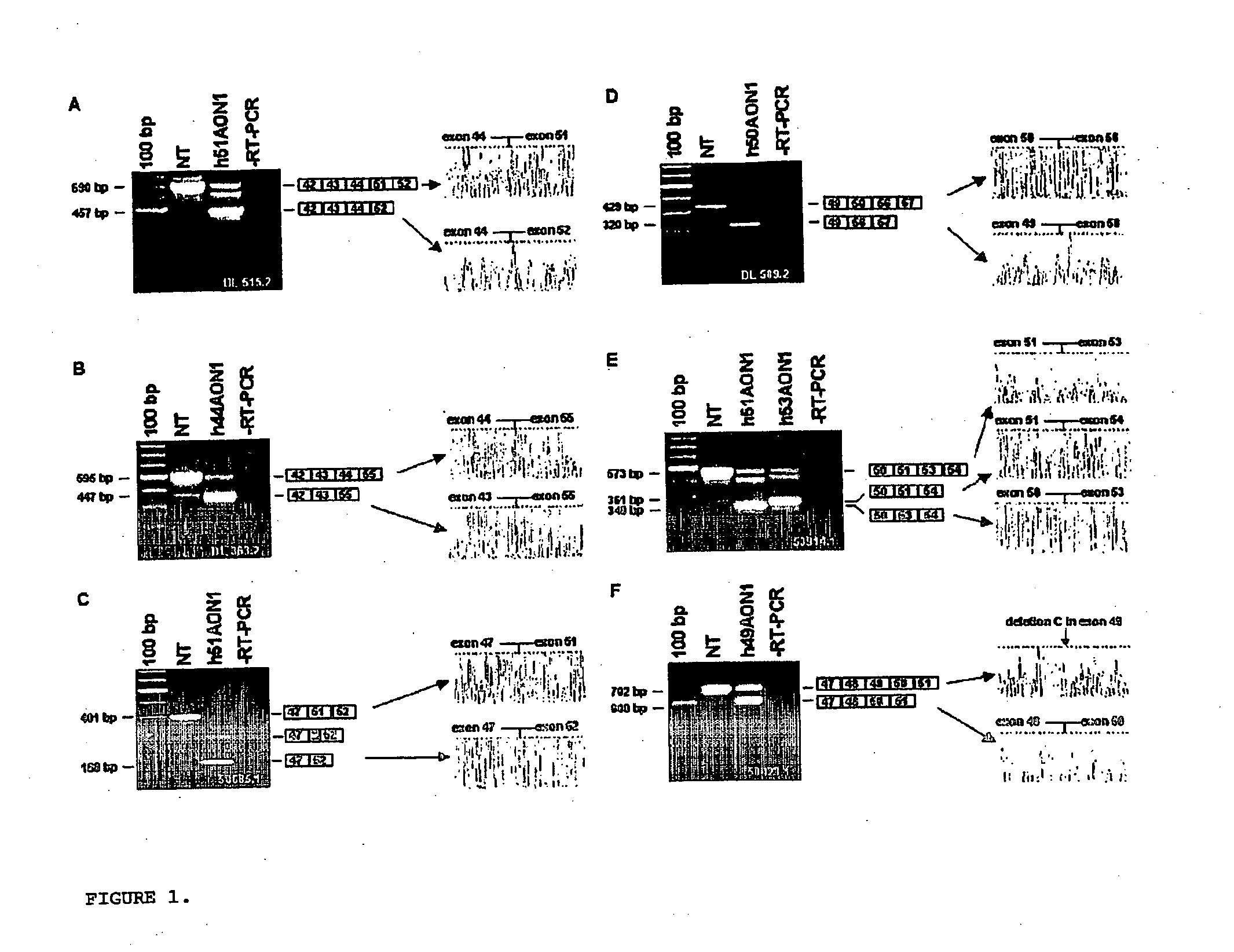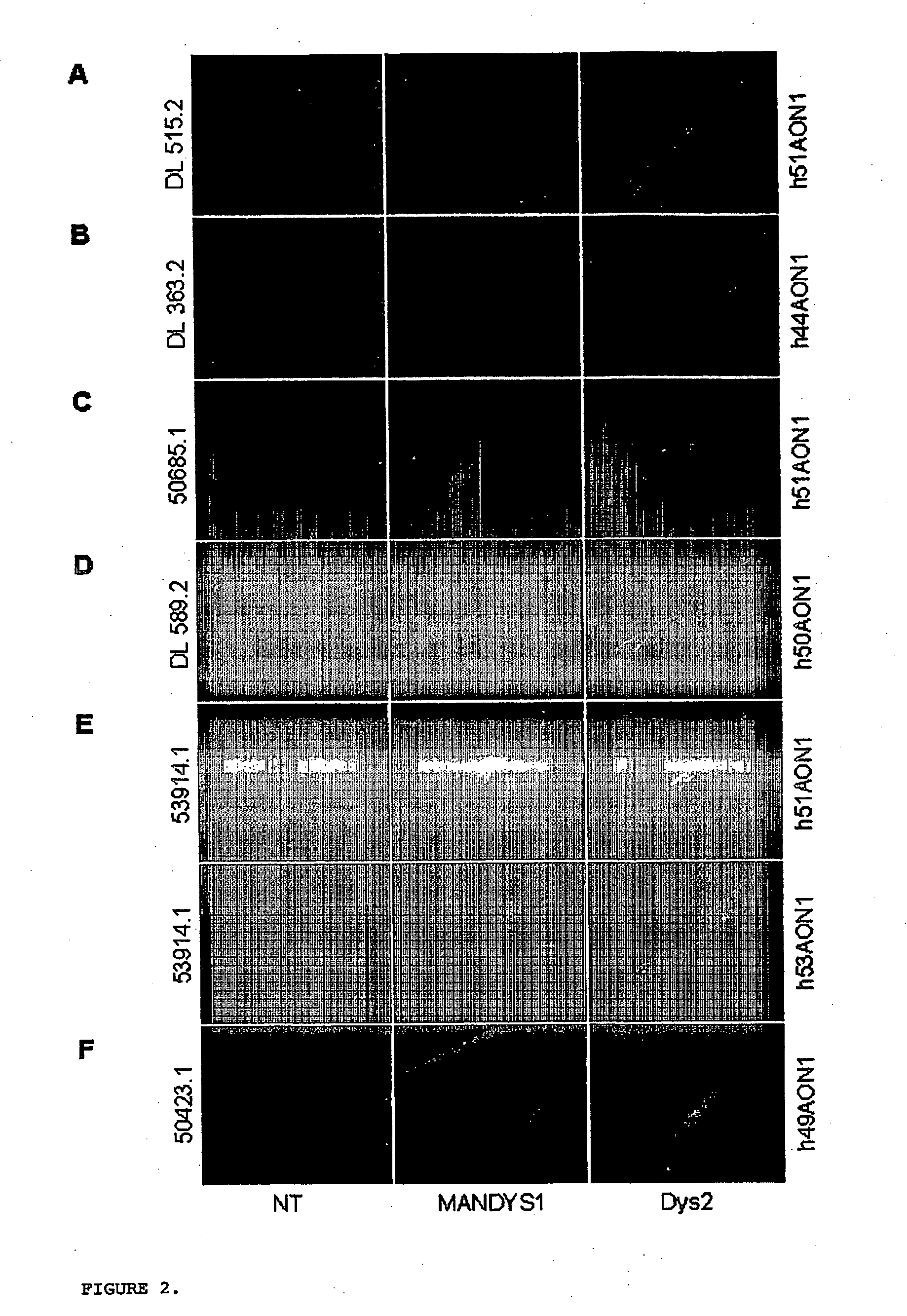Modulation of exon recognition in pre-mRNA by interfering with the secondary RNA structure
a technology of exon recognition and secondary rna, which is applied in the field of molecular biology and medicine, can solve the problems of reducing the risk that also one or more other pre-mrna will be able to hybridise to the oligonucleotide, disrupting the exon inclusion signal, etc., and achieves strong secondary structures. , improve the invasion efficiency of the oligonucleotide, increase the effect of interfering efficiency
- Summary
- Abstract
- Description
- Claims
- Application Information
AI Technical Summary
Benefits of technology
Problems solved by technology
Method used
Image
Examples
Embodiment Construction
ss="uspto-list">[0099] 1. Hoffman, E. P., Brown, R. H., Jr., Kunkel, L. M. (1987) Dystrophin: the protein product of the Duchenne muscular dystrophy locus. Cell, 51, 919-928. [0100] 2. Hoffman, E. P., Fischbeck, K. H., Brown, R. H., Johnson, M., Medori, R., Loike, J. D., Harris, J. B., Waterston, R., Brooke, M., Specht, L., et al. (1988) Characterization of dystrophin in muscle-biopsy specimens from patients with Duchenne's or Becker's muscular dystrophy. N. Engl. J. Med., 318, 1363-1368. [0101] 3. Den Dunnen, J. T., Grootscholten, P. M., Bakker, E., Blonden, L. A., Ginjaar, H. B., Wapenaar, M. C., van Paassen, H. M., van Broeckhoven, C., Pearson, P. L., van Ommen, G. J. (1989) Topography of the Duchenne muscular dystrophy (DMD) gene: FIGE and cDNA analysis of 194 cases reveals 115 deletions and 13 duplications. Am. J. Hum. Genet., 45, 835-847. [0102] 4. Koenig, M., Beggs, A. H., Moyer, M., Scherpf, S., Heindrich, K., Bettecken, T., Meng, G., Muller, C. R., Lindlof, M., Kaariainen, ...
PUM
| Property | Measurement | Unit |
|---|---|---|
| pH | aaaaa | aaaaa |
| pH | aaaaa | aaaaa |
| pH | aaaaa | aaaaa |
Abstract
Description
Claims
Application Information
 Login to View More
Login to View More - R&D
- Intellectual Property
- Life Sciences
- Materials
- Tech Scout
- Unparalleled Data Quality
- Higher Quality Content
- 60% Fewer Hallucinations
Browse by: Latest US Patents, China's latest patents, Technical Efficacy Thesaurus, Application Domain, Technology Topic, Popular Technical Reports.
© 2025 PatSnap. All rights reserved.Legal|Privacy policy|Modern Slavery Act Transparency Statement|Sitemap|About US| Contact US: help@patsnap.com



